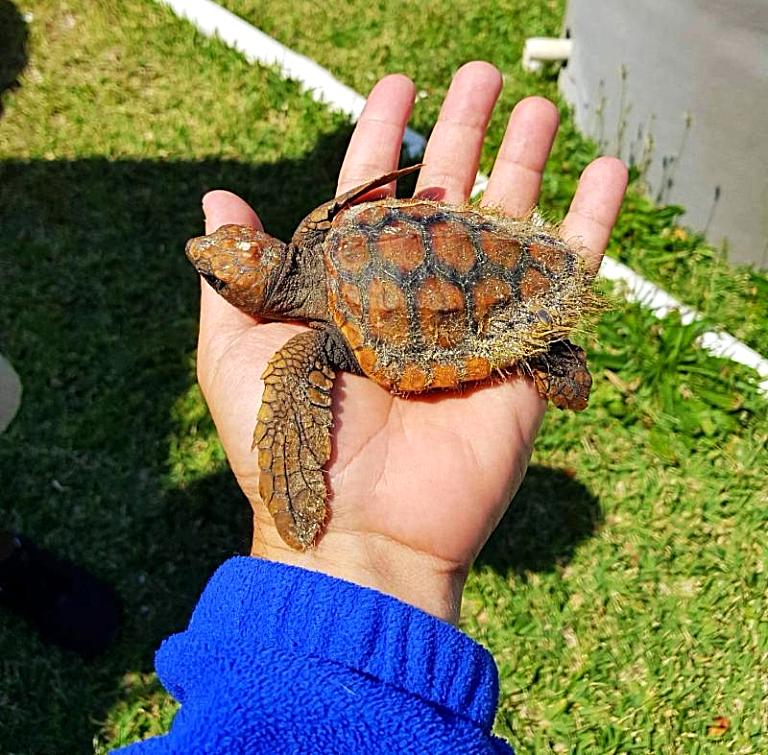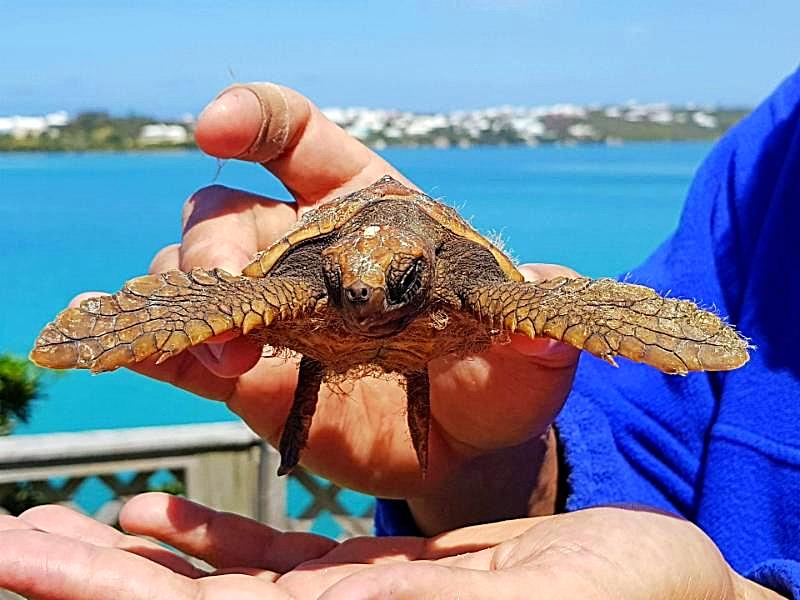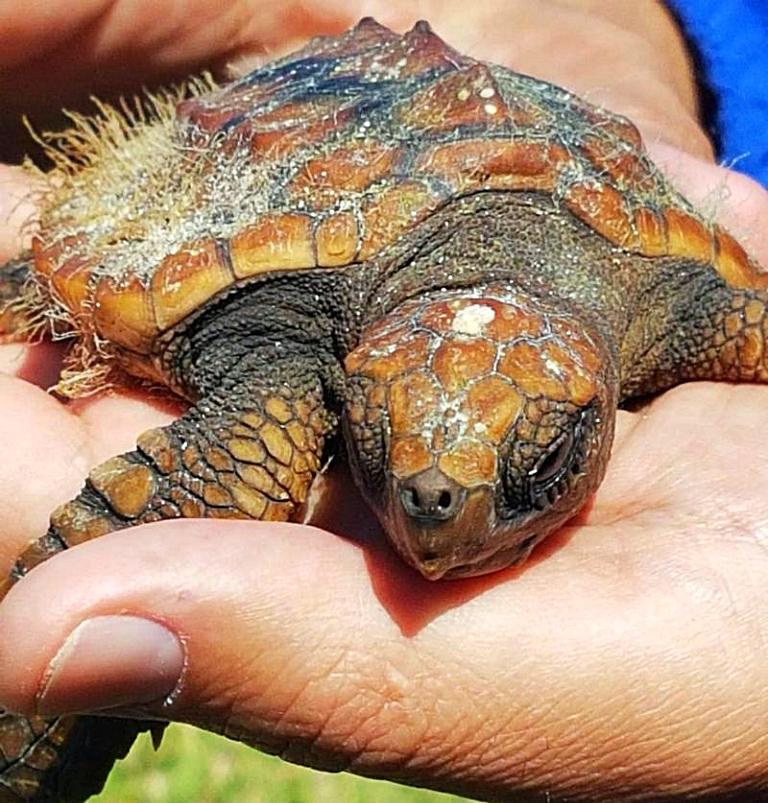Recent News
Sea turtle tangled in fishing line rescuedFriday, July 25, 2014
Efforts to protect Bermuda’s sea turtles have suffered another blow.
Bermuda Reef Life HD App Free For Android
Thursday, July 17, 2014
Fans of all things under the sea now have a new way of exploring the mysteries and wonders of Bermuda’s unique marine life as the Bermuda Zoological Society’s Bermuda Reef Life HD app is now available free for Android users
Chatterbox Preschool’s Art Auction To Aid BZS
Wednesday, July 16, 2014
Students at Chatterbox Preschool have recently been making waves in the art world, thanks to their recent studies about the ocean.
Blue Marlin donated for study
Monday, July 14, 2014
A Blue Marlin donated by the Billfish Tournament to the Ocean Vet team for research was hoisted for delivery to the Spanish Point Boat Club on July 11, with the 573 pound fish requiring a team of workers and several pieces of equipment to get it loaded and moved.
Minister Reports On State Of Bermuda Coral
Friday, July 11, 2014
In the House of Assembly today [July 11], Minister of Health, Seniors and Environment Jeanne Atherden delivered a report on the state of health of the coral reefs found in Bermuda’s waters and the Caribbean, citing the report by the Global Coral Reef Monitoring Network [GCRMN] released last week.
About
GovernanceAbout Us
Newsletter
Latest News
Gift & Bookstore
Contact
General Inquiries
info@bzs.bm
Latest News
All the latest updates and news from the Bermuda Aquarium, Museum, and Zoo, one of Bermuda's leading visitor attractions!
Excerpt from WILD News May 2018

This is Sheldon, a juvenile loggerhead turtle. Between December and March juvenile sea turtles (loggerheads, hawksbills and green sea turtles) will be swept up past Bermuda as they drift with their transient home of Sargassum. Sargassum is brown algae found in the Atlantic Ocean that forms dense floating masses called rafts which provide shelter, transport and food for many organisms. During this stage of their life (post hatchling), turtles are carried around with the currents. The Sargassum provides food such shrimp, tiny crabs and fish. Sea turtles eat whatever floats by and this often gets them into trouble. The Sargasso Sea is located in the North Atlantic Gyre and collects lots of microplastics. Sea turtles are not picky eaters and may eat the plastics This can cause an impaction of their digestive tract which can be life-threatening.


As they pass by Bermuda, they may be washed ashore by a winter storm or get picked up by birds that later drop them. As a result, these little critters can end up on one of our beaches or dropped amongst the rocks. The Wildlife Rehabilitation Department at BAMZ sees one or two post hatchling sea turtles a year. These post hatchlings are three to four inches in length and tend to be thin and exhausted from their journey. Because of their tiny size, they may have sustained injuries from predator attacks. We monitor them and give them time to rest and regain strength. Any injuries are treated and an appropriate amount of time is given to heal. We wait until the water warms up and we see large rafts of Sargassum returning offshore (May or June) before releasing them. By this time they have grown six to eight inches long. The release is done offshore so they can pick up the currents under a Sargassum raft and continue on their ocean journey. They will return to Bermuda again in 3-4 years as they move from their pelagic lifestyle to the reef shelf.

The current juvenile loggerhead was found on the beach at Willowbank on March 30, 2018. It appears healthy and is gaining weight. We hope to get it back out to the big blue in the near future. Note the tank it is currently in is actually the perfect spot for it at the moment. It would normally be in the open ocean all day in a vast sea of blue, and only given shelter by a Sargassum raft. The blue background is exactly what it would be seeing in the wild. Also, we can't tell the sex of the turtle at this age without a blood sample, so the sex remains unknown.



